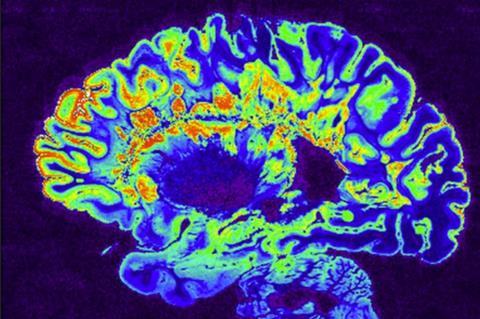Multiple sclerosis (MS) is a neurodegenerative disease of the central nervous system (CNS) that leads to permanent neurological impairments.

In collaboration with colleagues from Zürich and Bern, Switzerland and Lyon, France, the Düsseldorf research team led by Prof. Patrick Küry (Department of Neurology) has made important progress in understanding the complex disease mechanism by describing a direct functional connection between the release of an endogenous retrovirus and the worsening of neurodegenerative processes.
The authors published their results in the journal Proceedings of the National Academy of Sciences of the United States of America (PNAS).
Disease progression
A number of therapies are currently available against MS, but these are almost exclusively directed against the appearance of aggressive immune cells. However, the progression of the disease, which ultimately leads to irreversible deficits, cannot yet be treated and MS is still not curable.
The endogenous retrovirus HERV-W was isolated from tissue of MS patients over 30 years ago and has since been the subject of intensive research regarding its role in the disease process. This virus is integrated into our genome that our ancestors picked up millions of years ago. Interestingly, this element appears to be successfully silenced, but can be activated in a few pathological situations, including MS.
The initial suspicion that HERV-W acts as a pathogen could so far only be established indirectly, i.e. via cell cultures, because it is an exclusive human virus. Previous studies by Prof. Patrick Küry’s Düsseldorf team were able to use such ex vivo models to demonstrate a possible influence of HERV-W on degeneration, i.e. the decay of nerve tissue and a reduction its the already naturally limited regeneration capacity (via
oligodendroglial cells) - two processes that cannot yet be addressed therapeutically.
Novel mouse model
Current findings by Patrick Küry’s team, which were achieved in international collaboration with groups from Zürich, Bern and Lyon, resulted from the use of a novel mouse model that mimicks the expression of HERV-W in the CNS.
The scientists have now been able to prove that this viral entity is indeed involved in important MS sub-processes in vivo: damage to the white matter (myelin) and a further weakening of the already impaired regeneration capacity.
In addition, the occurrence of aggressive microglial cells was confirmed and, surprisingly, the generation of neurotoxic astrocytes was revealed. This is a widespread glial cell population that is naturally involved in many physiological functions, but which, as a result of the presence of HERV-W in the brain, now appears to have a primarily neurotoxic character.
Toxic environment
As the first author Joel Gruchot, of this new investigation published in PNAS, explains: “The presence of the HERV-W virus in the brains of MS patients appears to generate a toxic environment.
”It cannot be determined from this data whether it actually initiates the MS disease process because the model used is not suitable to show this. However, it has now been clearly demonstrated for the first time that decay processes are increased and that sensitive regeneration processes are disrupted.”
Alongside the scientific elucidation of the corresponding pathomechanism, clinical-therapeutic developments aiming at neutralizing HERV-W in MS patients have also been advanced in collaboration with the company GeNeuro, based in France and Switzerland.
After two successful clinical studies with a neutralizing antibody called Temelimab, the Düsseldorf researchers and their colleagues can now explain why neurodegeneration indeed decreased in MS patients treated with Temelimab: The antibody appears to block the “toxic” envelope protein of HERV-W and thus prevent its activity in the CNS as well as the neurotoxic activation of microglia and astrocytes.







No comments yet